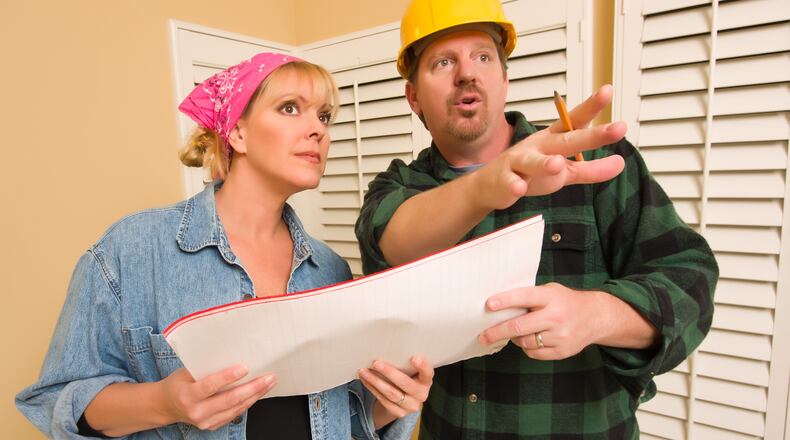Bad communication is the downfall of any relationship, especially the one between homeowners and their contractor. Besides causing friction and frustration, the lack of communication can lead to lousy end results — a new kitchen you don’t really love, for example, or a seemingly simple home repair that winds up costing way more than expected.
Here’s how to have good communication with your contractor from start to finish.
TRUST YOUR GUT
When choosing a contractor, checking references and credentials is important, but you also need to take stock of the intangibles, including trust and rapport. Do you feel like you can speak freely with the contractor? How well do they listen? If they’re distracted or dismissive during the initial meeting, it’s only going to get worse once the project is underway.
If there are other pros on the team, say a designer or architect, pay close attention to the group dynamic. There’s always a little push-pull between design and construction, but you want a team that can collaborate on these problems without the need for constant mediation.
ESTABLISH CLEAR PROTOCOLS
Some contractors are phone guys, while others prefer text, email, or even handwritten notes. Large remodeling companies might even use construction management software that lets the client track things like scheduling, payments and deliveries. Any mode of communication can work, so long as everyone is clear on the protocol from the beginning. And so long as everyone sticks to the protocol until the end.
PUT EVERYTHING IN WRITING
You wanted the bathroom walls blue but your general contractor paints them green. You can swear you agreed to three recessed canister lights in the hallway, not two. These types of miscommunications will be avoided with a written contract that clearly spells out the full scope of the project. It should include a breakdown of the labor and material costs, right down to the model numbers.
Stay away from so-called allowances, basically blank spaces in the contract for items that are yet to be determined. Besides opening the door to misunderstandings, allowances can blow your budget, for example if products end up costing much more than you expected.
CHECK IN EARLY AND OFTEN
No matter how thorough you are in the planning phase, you still need to check in regularly once the work gets underway. The demo phase often turns up hidden surprises, from termites to structural damage, that you’ll want to discuss in person with your contractor. At the back end of the project, it’s a good idea to review finish details, like paint colors and tile patterns, before they’re applied once and for all.
SHARE YOUR EXPERIENCE
Good communication continues after the project is complete, in the form of online reviews. If you had a bad experience, other homeowners need to know about it. Hopefully that won’t be the case, and you’ll be posting a positive review. That will keep up good relations with your contractor and help them secure the new business they deserve. And it will also ensure your place at the front of the line when it comes to future projects.
———
Dan DiClerico is a reporter for HomeAdvisor, an online marketplace connecting homeowners with trusted service professionals to complete home projects. Visit HomeAdvisor.com
About the Author
Keep Reading
The Latest
Featured

